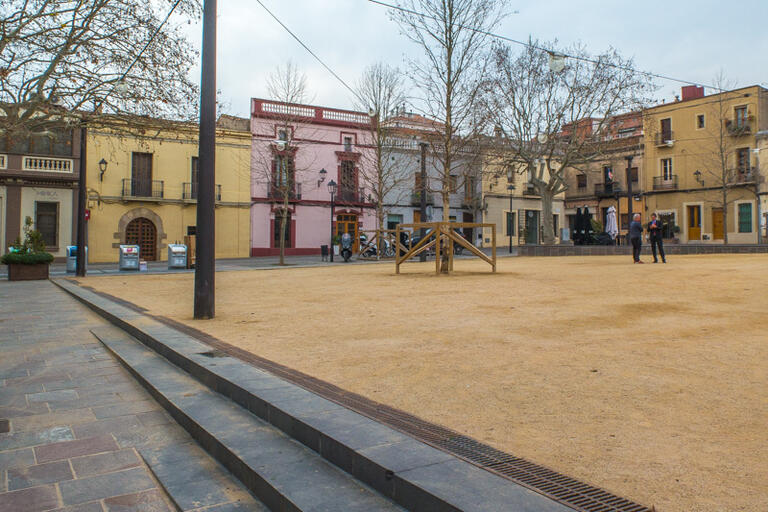
Introduction
Our visit begins in Plaçza Barcelona. This square constitutes the center of an urban expansion that began in the mid-19th century in the final section of the streets of Sant Antoni and Xerric, and also formed by the streets of Girona and Vinyoles. This expansion responded to the houseing demand of peasant families that were dedicated to the cultivation of vineyards and winemaking, expanding in the 19th century.
The houses around it are houses built throughout the second half of the 19th century, following the typology of aa body or double-body typology house typical of farmhouses. The ornate facades, where the balustrades and finials stand out, and the large openings, are a reflection of the economic boom brought by the vine-yarding. Some of these houses can be considered historical.
The name of the square has changed over time. In 1861 it bore had the name of Elizabeth II, who was the reigning monarch. With the revolution of 1868 it was renamed Plaçza de Madoz, in memory of the progressive minister. In 1870 it took the name of Plaçza de Isabel without any reference to the queen. That same year the Cal Ventura’s café was built, a historic building since in 1932 it would become a Town Hall until 2007. In 1874 the name of Plaçaza Isabel II returned, and the same year the residents were authorized to plant bananas trees of to provide shade, taken from the Devesa de Girona. Each neighbor pays one and Cal Ventura's coffee, two. In 1896 it adopted the current name of Plaçza de Barcelona.
Important social and cultural events take place in the square. At the beginning of the 20th century, when there was still no football pitchfield in the town, the first young fans of this sport came to practice it in this squareplace and some of them ended up participating in the creation of the Sant Cugat Ffootball Cclub. The Barsquare of Barcelonacelona’s square has always been and is the square of the life of the peoplepeople’s life. It has hosted the headquarters of such important entities as the Montañero Club and the City Council. Its neighbors have been promoters of festive activities in San CugatSant Cugat, with a notable boost from the 60s of the 20th20ths centurycenturies, from the private and public sphereinstitutions and people. All the associative life of the 70s and 80s was closely linked to the Mountaineering Club, Party Commissions, Christmas activities, carnival ... and the Children's March. This point brought together a large part of the life of the town.
The City Council provided the ideal space to celebrate all the traditional and institutional festive activities, although, naturally, linked to the rural life of the Cooperative Winery, the religious life of the Octaviano’s Square (with the monastery) and the Plaçza de Lluis Millet (with the railway and the communications axis). The three squares formed, for decades, the three main axes of the population.